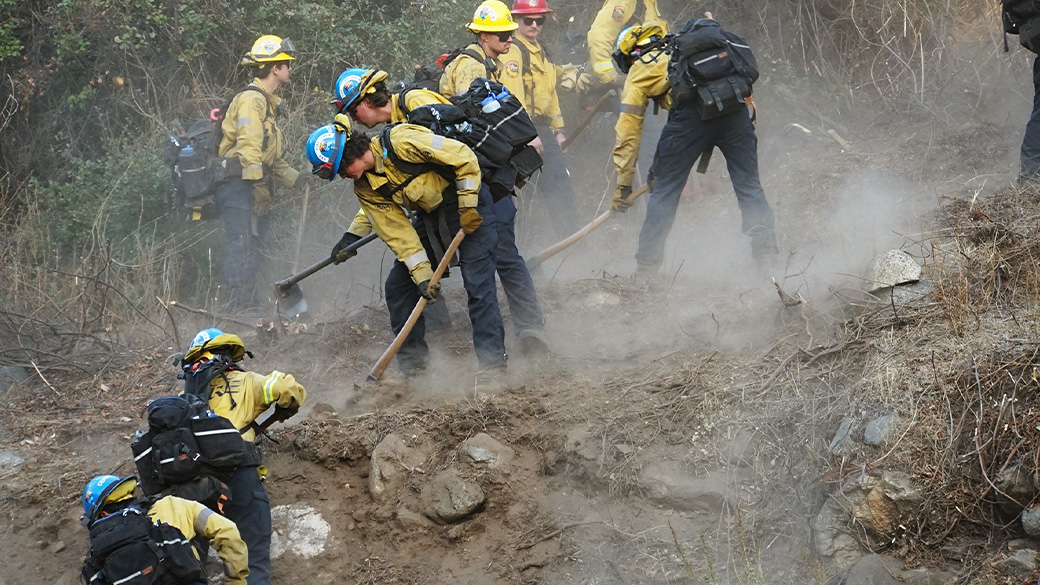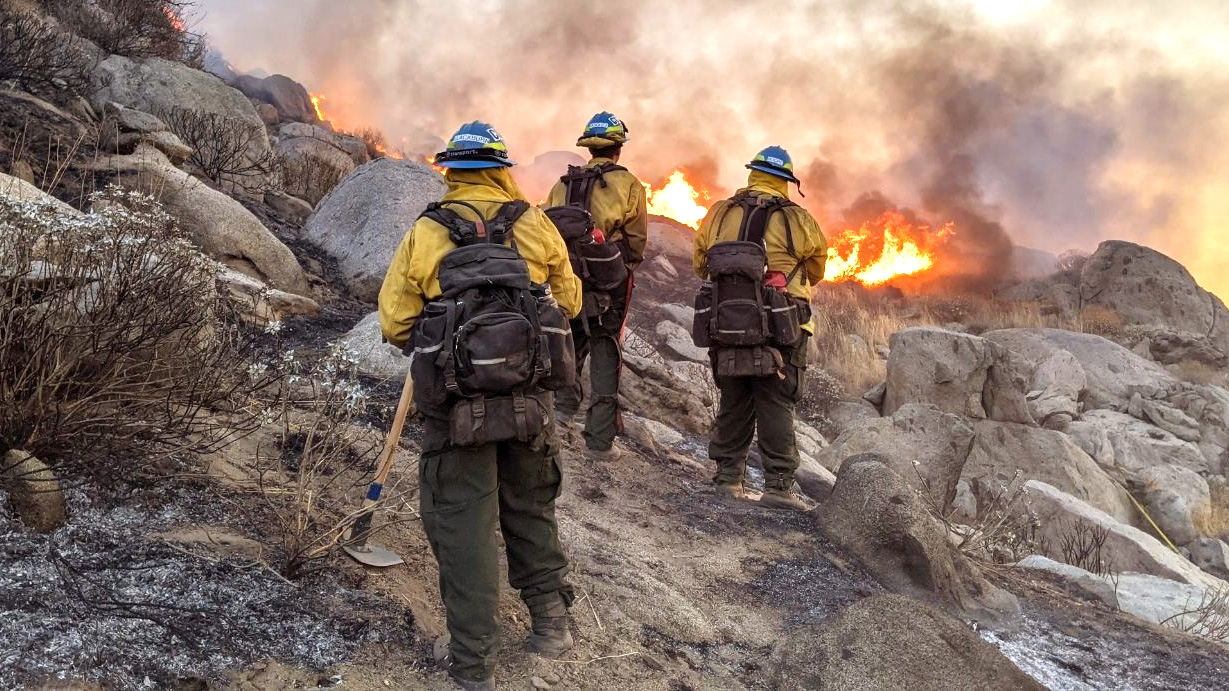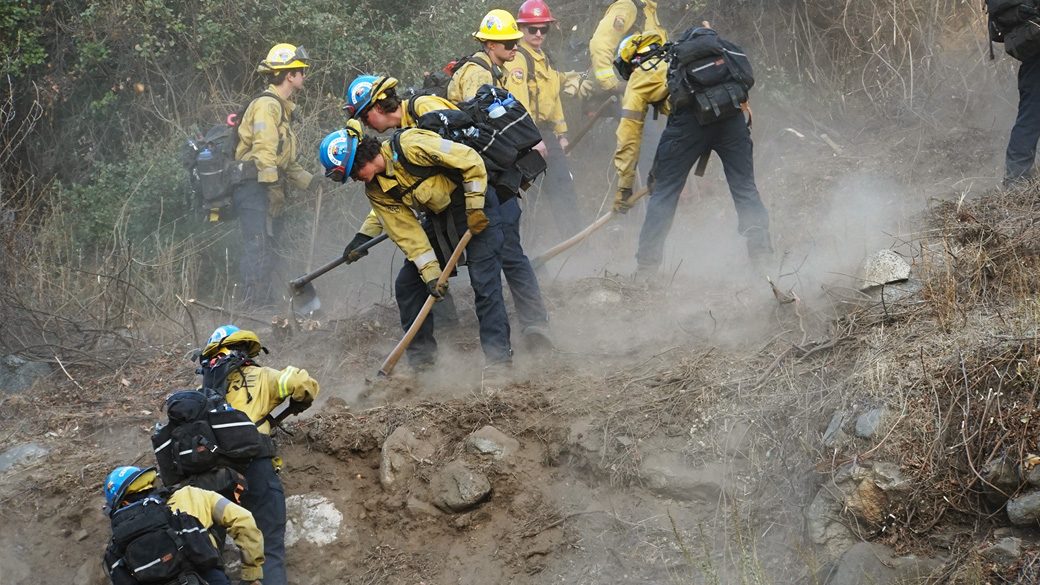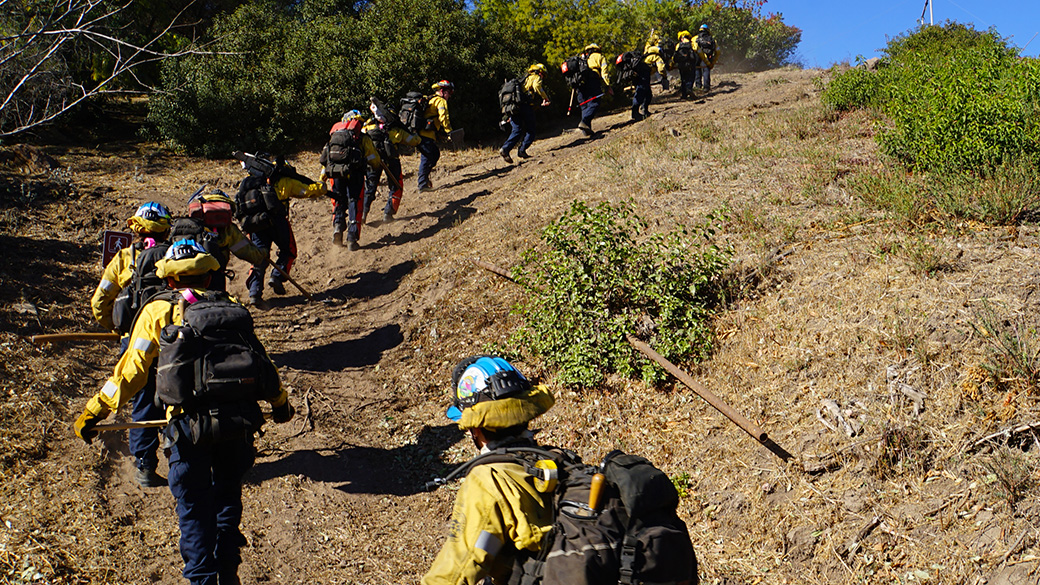Wildland Firefighting
Ignite Your Career!
Watch CCC’s Wildland Firefighting Playlist to spark your interest.
Gear Up
Each day, Corpsmembers gear up to make the world a better place. Check out what tools they use and picture what life is like training for careers in the fire service!
Know Before You Go
Schedule
Fire crews typically work four 10-hour shifts during the week and may be required to cover weekends during peak fire conditions. Crews will also be assigned staffing patterns and work 24-hour shifts at a moment’s notice when assigned to fire incidents.
Emergencies
Corpsmembers must be willing to respond to wildfires, working closely to live fire, and be dispatched for lengthy periods of time with little notice. Fire crews may also respond to floods and other disasters.
Eligibility
In addition to our standard eligibility requirements, Corpsmembers interested in joining a wildland firefighting hand crew must pass physical fitness tests and written exams to serve on a fire crew.
Find Your Path
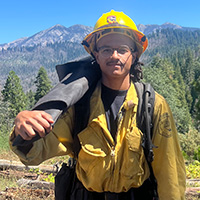
Donovan Prado
Firefighter 1
CAL FIRE
The CCC is the perfect place to explore careers working outdoors! This especially rings true for CCC Fresno Corpsmember, Donovan Prado. “The CCC showed me how hard and strenuous the work can get,” Donovan said. “And it gave me a glimpse of what working for CAL FIRE looks like.”
During his time with the CCC, Donovan attended the Ventura Training Academy and worked on the Fresno fire crew—known as Mid Valley 1. His biggest challenge? Hiking. All the up-hills and rough trails paid off though because Donovan is now a Firefighter 1 with the Tulare Unit! His parting advice for those thinking about taking the next step in their CCC Path To Success?
“You never know if it’s for you, if you don’t try.”
Donovan Prado

Amanda Morrisroe
Firefighter 1
CAL FIRE
[Path to Success Post Text]
Amanda Morrisroe

Jack Weinrich
Forestry Technician & Helitack Firefighter
U.S. Forest Service
Jack Weinrich joined the CCC Magalia Fire Center ready to take advantage of all available opportunities. “I was able to receive the necessary certifications and training for a job in wildland fire,” he said after two years on a fire crew.
Now Jack’s advancing on his CCC Path To Success by becoming a Forestry Technician and Helitack Firefighter with the U.S. Forest Service! “Without the CCC I would not have had nearly as solid a foundation for my fire career,” he said. “I would absolutely recommend the CCC to anyone beginning their career, or simply trying to find themselves.”
Jack Weinrich
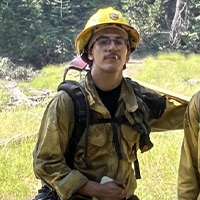
Francisco Morales
Firefighter 1
CAL FIRE
Francisco Morales joined the CCC Camarillo Center determined to become a wildland firefighter! While serving on a CCC Fire crew, he got to work – training, earning certifications, and even becoming first saw!
Now employed by CAL FIRE Tehama-Glenn Unit, all the effort has paid off on his CCC Path To Success. For young adults looking to transform their life – even those unsure of their career path – Francisco recommends the CCC!
“Go for it! You live one life, try everything that is possible. You never know, you might just fall in love with it.”
Francisco Morales
Explore Our Locations
CCC offers wildland firefighting training at 15 locations across California.
Residential
- Camarillo Center
- Delta Center
- Fortuna Center
- Los Padres Center
- Los Piños Center
- Magalia Fire Center
- Mendocino Center
- Placer Center
- Tahoe Center
Non-Residential
- Fresno Center
- Inland Empire Center
- Monterey Bay Center
- Pomona Center
- Redding Center
- San Diego Center
Camarillo Center
The Camarillo Center partners with the CAL FIRE San Luis Obispo Unit to operate four wildland firefighting hand crews. As many as 60 Corpsmembers serve on these four crews.
Known as Camarillo 1, 2, 3, and 4, the crews primarily serve Ventura County with initial fire attack and suppression. Ventura County is one of six contract counties in the state, where the county provides State Responsibility Area coverage. However, the San Luis Obispo Unit does provide coverage to Ventura and Santa Barbara counties.
Delta Center
The Delta Center partners with CAL FIRE to operate two year-round firefighting hand crews – known as Stockton 1 and 2. As many as 30 Delta Corpsmembers serve on these two hand crews.
The center partners with the CAL FIRE Tuolumne-Calaveras Unit, which covers Tuolumne, Calaveras, eastern portions of San Joaquin, and eastern portions of Stanislaus counties.
Fortuna Center
The CCC Fortuna Center operates a wildland firefighting hand crew in collaboration with the CAL FIRE Humboldt-Del Norte Unit. As many as 15 Corpsmembers serve on the hand crew.
The Humboldt-Del Norte Unit provides coverage for all State Responsibility Areas in Del Norte, Humboldt, and southwestern Trinity counties.
Fresno Center
The CCC Fresno Center operates one wildland firefighting hand crew in collaboration with the CAL FIRE Fresno-Kings Unit. As many as 15 Corpsmembers serve on the hand crew.
The Fresno-Kings Unit provides coverage for all State Responsibility Areas in Fresno and Kings county.
Inland Empire Center
The Inland Empire Center partners with the Bureau of Land Management (BLM) to operate a wildland firefighting hand crew. As many as 15 to 18 Corpsmembers serve on the crew.
The Inland 5 fire crew works within the California Desert District for BLM. BLM crews also incorporate National Park Service firefighters. The district is responsible for protecting and preserving nearly 11 million acres of land.
Los Padres Center
The CCC Los Padres Center operates two wildland firefighting hand crews in collaboration with the CAL FIRE San Luis Obispo Unit. As many as 30 Corpsmembers serve on these hand crews.
The San Luis Obispo Unit, or SLU, provides coverage for all State Responsibility Areas across San Luis Obispo County. The hand crews are known as Toro 1 and Toro 2, as the unit manages the Toro Fire Center.
Los Piños Center
The CCC Los Piños Center operates four wildland firefighting hand crews in collaboration with the CAL FIRE Riverside Unit. As many as 60 Corpsmembers serve on these hand crews.
The CAL FIRE Riverside Unit provides State Responsibility Area (SRA) coverage for the entire county and is also known as the Riverside County Fire Department or RVC Fire. Corpsmembers may also assist in providing fire coverage to nearby Orange County, which is one of six contract counties providing SRA coverage in the state.
Magalia Fire Center
The CCC Magalia Fire Center operates four wildland firefighting hand crews in collaboration with the CAL FIRE Butte Unit. As many as 60 Corpsmembers serve on these four hand crews.
The Butte Unit provides coverage for all State Responsibility Areas in Butte County, and some small portions of Tehama County’s southeastern border.
Monterey Bay Center
The CCC Monterey Bay Center operates one wildland firefighting hand crew in collaboration with the CAL FIRE Santa Cruz-San Mateo Unit. As many as 15 Corpsmembers serve on the hand crew.
The Santa Cruz-San Mateo Unit, or CZU, provides coverage for all State Responsibility Areas in Santa Cruz, San Mateo, and San Francisco counties.
Mendocino Center
The CCC Mendocino Center operates two wildland firefighting hand crews in collaboration with the CAL FIRE Mendocino Unit. As many as 30 Corpsmembers serve on the two hand crews.
The Mendocino Unit provides coverage for all State Responsibility Areas in Mendocino County, as well as a small portion of southeastern Trinity County.
Placer Center
The CCC Placer Center operates two wildland firefighting hand crews in collaboration with the CAL FIRE Nevada-Yuba-Placer Unit. As many as 30 Corpsmembers serve on these two hand crews.
The Nevada-Yuba-Placer Unit, also known as NEU, provides coverage for all State Responsibility Areas across Nevada, Placer, Sierra, Sutter, and Yuba counties.
Pomona Center
The CCC Pomona Center operates a wildland firefighting hand crew in collaboration with the CAL FIRE San Bernardino-Mono-Inyo Unit. As many as 15 Corpsmembers serve on the hand crew.
The CAL FIRE San Bernardino-Mono-Inyo Unit, also known as BDU, provides State Responsibility Area coverage for all three counties. Corpsmembers assigned to the Pomona 1 fire crew report to the Pomona Center daily and commute to the BDU Headquarters in San Bernardino before starting project work or responding to wildfires.
Redding Center
The CCC Redding Center operates one wildland firefighting hand crew in collaboration with the CAL FIRE Shasta-Trinity Unit. As many as 15 Corpsmembers serve on the hand crew.
The Shasta-Trinity Unit, or SHU, provides coverage to all State Responsibility Areas in a majority of Shasta County, as well as the northern majority of Trinity County.
San Diego Center
The CCC San Diego Center operates one wildland firefighting hand crew in collaboration with the CAL FIRE San Diego unit. As many as 15 Corpsmembers serve on the hand crew.
The San Diego Unit provides coverage to all State Responsibility Areas in San Diego and Imperial counties.
Tahoe Center
The CCC Tahoe Center operates two wildland firefighting hand crews in collaboration with the CAL FIRE Amador-El Dorado Unit. As many as 30 Corpsmembers serve on the two hand crews.
The Amador-El Dorado Unit, or AEU, provide coverage to all State Responsibility Areas in Alpine, Amador, El Dorado, Sacramento, and the northeastern most portion of San Joaquin counties.
Ask Us Anything
We know you have questions about wildland firefighting. Here are some of the common one’s we get. Have more questions? Contact us!
Talk to A Recruiter
Do I need prior experience to join?
In terms of education, you do not need a diploma or degree to join. We have Corpsmembers who have college degrees, some who’ve attended college for some or no time, and some who need their high school diploma. Please note, if you have not obtained your high school diploma, while enrolled in the CCC you must work to earn one through our partnered charter schools.
What are the grooming standards for CCC fire crews?
What happens if I fail one of the required tests?
I have a disability. Can I still join?
REad Our NEws
Tahoe Centers fire crews helped protect people and property while on the Eaton Fire.
Multiple CCC fire strike teams worked in and around Topanga Canyon during the height and aftermath of the Palisades Fire.
Three dozen Corpsmembers took their firefighting skills to another level, completing a full structural fire academy—for free.
CCC wildland firefighting hand crews are ready for peak wildfire season after months of training and physical fitness.

